Waterless Tomato Growing: Imagine biting into a juicy, sun-ripened tomato, bursting with flavor, knowing you nurtured it with minimal water. Sounds like a dream, right? Well, it doesn’t have to be! For centuries, resourceful gardeners in arid climates have been perfecting techniques to cultivate thriving tomato plants even with limited water resources. From ancient dry farming methods to modern adaptations, the quest for water-wise gardening has deep roots.
In this DIY guide, I’m going to share some amazing tricks and hacks that will empower you to achieve successful waterless tomato growing. We all know the frustration of high water bills and the environmental impact of excessive irrigation. Plus, in many regions, water restrictions are becoming increasingly common. That’s why mastering these techniques is not just a fun experiment, it’s a practical skill that can save you money, conserve precious resources, and ensure you can enjoy delicious homegrown tomatoes no matter the weather!
Ready to ditch the constant watering and unlock the secrets to thriving tomatoes with minimal water? Let’s dive in!
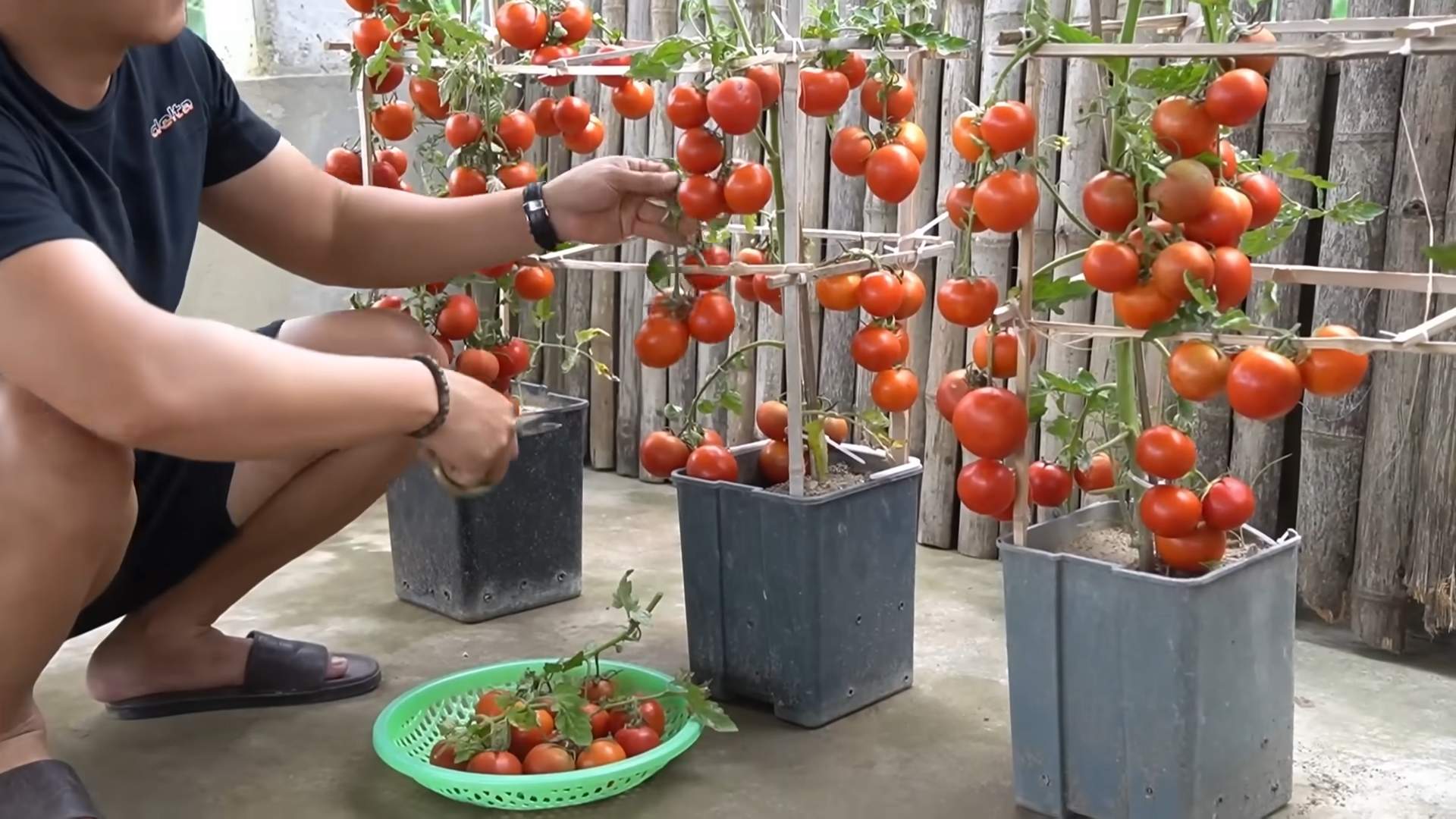
DIY Waterless Tomato Growing: A Guide to Self-Sufficient Tomatoes
Hey there, fellow gardening enthusiasts! Ever dreamt of juicy, ripe tomatoes without the constant worry of watering? Well, get ready to ditch the hose because I’m going to walk you through a fantastic method for growing tomatoes with minimal watering – almost none, in fact! This technique, often called “waterless tomato growing” or “self-watering tomato growing,” focuses on creating a moisture-retentive environment that feeds your plants from the ground up. It’s perfect for busy gardeners, drought-prone areas, or anyone looking to conserve water.
What You’ll Need
Before we dive in, let’s gather our supplies. This is what I typically use, but feel free to adapt based on what you have available:
* Large Plastic Containers: Think 5-gallon buckets, large storage totes, or even repurposed trash cans (make sure they’re food-grade if you’re using them for edibles!). The bigger, the better, as it provides more space for root growth and water retention.
* Tomato Seedlings: Choose your favorite variety! Determinate (bush) varieties are often a good choice for containers, but indeterminate (vining) varieties can also work with proper support.
* Potting Mix: A high-quality potting mix is crucial. Avoid garden soil, as it can compact in containers. I prefer a mix that’s light, airy, and well-draining.
* Compost: This is the heart of our water-retention system. Use well-rotted compost, either homemade or store-bought.
* Straw or Hay: This acts as a mulch to conserve moisture and suppress weeds.
* Newspaper or Cardboard: This layer helps prevent soil from washing away and provides a barrier against weeds.
* Fertilizer: A slow-release tomato fertilizer will provide essential nutrients throughout the growing season.
* Drill: For creating drainage holes (if needed).
* Landscape Fabric (optional): To line the container and further prevent soil loss.
* Support Structure (optional): Tomato cages or stakes for vining varieties.
Preparing Your Containers
This is a crucial step to ensure proper drainage and prevent waterlogging.
1. Drill Drainage Holes: If your container doesn’t already have them, drill several drainage holes in the bottom. I usually go for about 4-6 holes, spaced evenly.
2. Line the Container (Optional): If you’re concerned about soil loss through the drainage holes, line the container with landscape fabric. This will allow water to drain while keeping the soil in place. Cut the fabric slightly larger than the container and tuck it inside, leaving some overlap.
Building the Water-Retentive Base
This is where the magic happens! We’re creating a reservoir of moisture that the tomato plants can access as needed.
1. Newspaper/Cardboard Layer: Place a layer of newspaper or cardboard at the bottom of the container. This will decompose over time, adding organic matter to the soil and helping to retain moisture. Make sure to wet the newspaper or cardboard thoroughly before adding it.
2. Compost Layer: Add a thick layer of compost on top of the newspaper/cardboard. This layer should be at least 6-8 inches deep. The compost will act as a sponge, holding water and releasing it slowly to the plants.
3. Fertilizer: Sprinkle a generous amount of slow-release tomato fertilizer over the compost layer. Follow the instructions on the fertilizer package for the correct amount.
Planting Your Tomato Seedlings
Now for the fun part – getting those tomato plants in the ground!
1. Add Potting Mix: Fill the rest of the container with potting mix, leaving a few inches of space at the top.
2. Dig a Hole: Dig a hole in the potting mix large enough to accommodate the root ball of your tomato seedling.
3. Plant the Seedling: Gently remove the seedling from its container and place it in the hole. Make sure the top of the root ball is level with the surrounding soil.
4. Backfill and Water: Fill in the hole with potting mix and gently pat it down. Water the seedling thoroughly to help it settle in.
Mulching and Support
These final steps will help conserve moisture, suppress weeds, and provide support for your growing tomato plants.
1. Mulch with Straw or Hay: Spread a thick layer of straw or hay around the base of the tomato plant. This will help to retain moisture, suppress weeds, and keep the soil cool.
2. Add Support (Optional): If you’re growing a vining variety of tomato, install a tomato cage or stake to provide support. This will prevent the plant from sprawling on the ground and help to keep the fruit clean.
Maintaining Your Waterless Tomato Garden
While this method minimizes watering, it’s not entirely “waterless.” Here’s what you need to do to keep your tomatoes thriving:
1. Initial Watering: After planting, water the tomato plants thoroughly. This will help to settle the soil and encourage root growth.
2. Monitor Moisture Levels: Check the soil moisture regularly, especially during hot, dry weather. You can do this by sticking your finger into the soil a few inches deep. If the soil feels dry, water the plants.
3. Water Deeply and Infrequently: When you do water, water deeply and infrequently. This will encourage the roots to grow deeper into the soil, where they can access the moisture in the compost layer.
4. Fertilize Regularly: Continue to fertilize your tomato plants throughout the growing season, following the instructions on the fertilizer package.
5. Prune as Needed: Prune your tomato plants as needed to remove suckers and improve air circulation. This will help to prevent disease.
6. Harvest Your Tomatoes: Harvest your tomatoes when they are ripe and ready to eat!
Troubleshooting
Even with the best planning, you might encounter some challenges. Here are a few common issues and how to address them:
* Yellowing Leaves: This could be a sign of overwatering, underwatering, or nutrient deficiency. Check the soil moisture and adjust your watering schedule accordingly. If the leaves are yellowing due to nutrient deficiency, fertilize the plants with a balanced tomato fertilizer.
* Blossom End Rot: This is a common problem in tomatoes, caused by a calcium deficiency. To prevent blossom end rot, make sure your soil is rich in calcium and water the plants regularly. You can also add calcium to the soil by mixing in some crushed eggshells or bone meal.
* Pests and Diseases: Keep an eye out for pests and diseases, such as aphids, whiteflies, and tomato blight. Treat any infestations or diseases promptly with appropriate organic or chemical controls.
Tips for Success
Here are a few extra tips to help you succeed with waterless tomato growing:
* Choose the Right Container: The size of the container is important. A larger container will hold more water and provide more space for root growth.
* Use High-Quality Potting Mix: A high-quality potting mix will provide good drainage and aeration.
* Amend the Soil with Compost: Compost is essential for water retention and nutrient availability.
* Mulch Generously: Mulch will help to conserve moisture and suppress weeds.
* Water Deeply and Infrequently: This will encourage the roots to grow deeper into the soil.
* Fertilize Regularly: Tomatoes are heavy feeders and need regular fertilization.
* Monitor Your Plants: Check your plants regularly for signs of pests, diseases, or nutrient deficiencies.
Why This Method Works
The beauty of this method lies in its simplicity and effectiveness. By creating a moisture-retentive base and mulching the soil, we’re essentially mimicking the natural environment where tomatoes thrive. The compost acts as a sponge, holding water and releasing it slowly to the plants. The mulch helps to prevent evaporation, keeping the soil cool and moist. And the deep watering encourages the roots to grow deeper into the soil, where they can access the moisture in the compost layer.
Adapting to Your Climate
Remember that these are general guidelines, and you may need to adjust them based on your specific climate. If you live in a hot, dry climate, you may need to water your plants more frequently. If you live in a cool, wet climate, you may need to provide better drainage.
Experiment and Learn
The best way to learn is by doing! Don’t be afraid to experiment with different techniques and see what works best for you. Gardening is a journey, and there’s always something new to learn.
I hope this guide has inspired you to try waterless tomato growing. It’s a rewarding and sustainable way to grow your own delicious tomatoes, and I’m confident that you’ll be successful. Happy gardening!
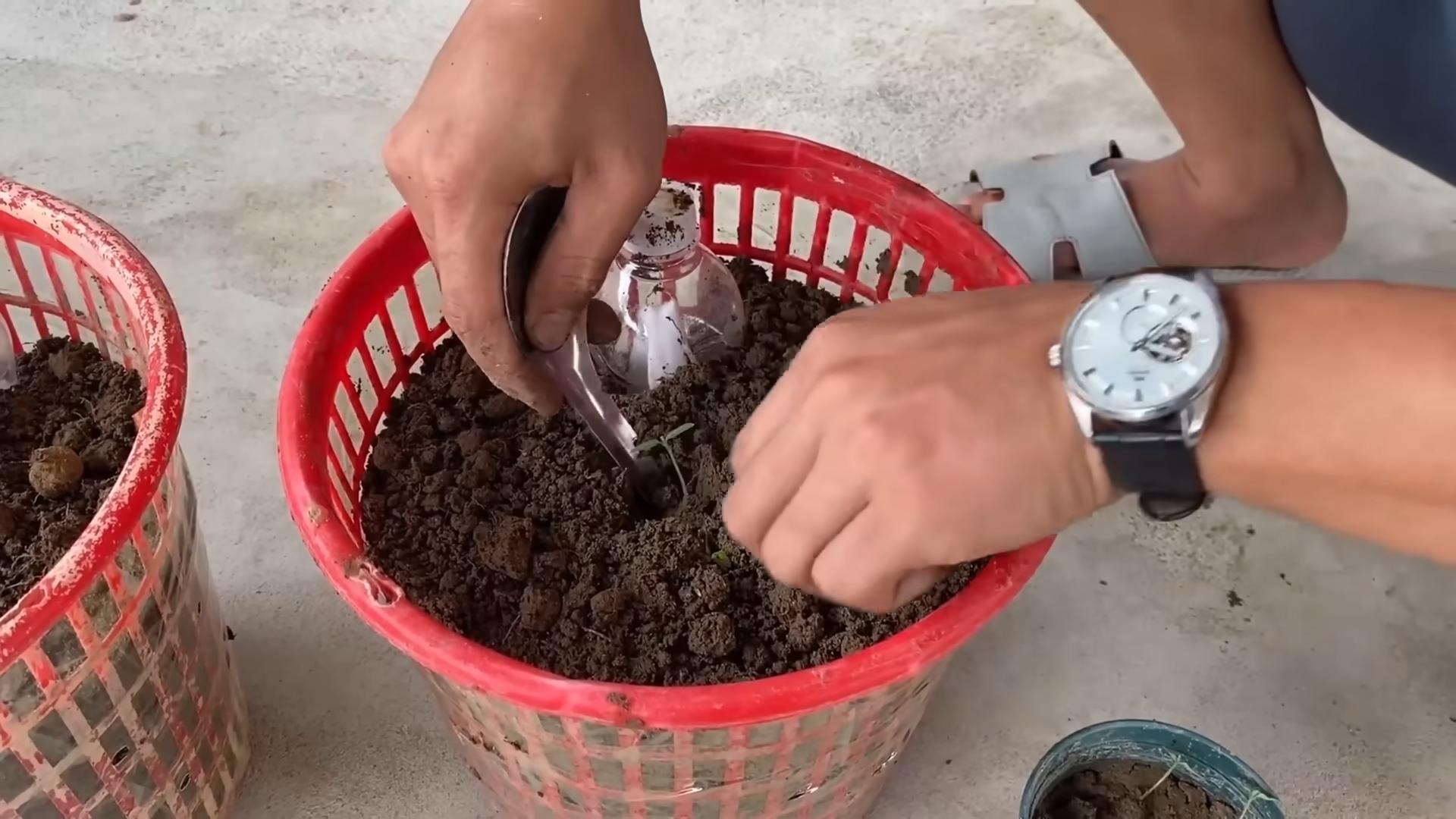
Conclusion
So, there you have it! The waterless tomato growing method – a revolutionary approach that promises a bountiful harvest while conserving precious water resources. We’ve explored the science behind it, the simple steps involved, and the incredible benefits it offers, from reduced water bills to healthier, more flavorful tomatoes.
But why is this DIY trick a must-try? Because it’s more than just a gardening technique; it’s a sustainable solution for a world facing increasing water scarcity. It empowers you to grow your own food, reduce your environmental footprint, and enjoy the unparalleled taste of homegrown tomatoes, all while using significantly less water than traditional methods. Imagine biting into a juicy, sun-ripened tomato, knowing that you cultivated it using a method that’s both efficient and eco-friendly. That’s the power of waterless tomato growing.
This method is particularly beneficial for those living in arid or drought-prone regions, or for anyone looking to minimize their water consumption in the garden. It’s also a fantastic option for beginner gardeners, as it simplifies the watering process and reduces the risk of overwatering, a common mistake that can lead to root rot and other problems.
Don’t be afraid to experiment with variations to suit your specific needs and preferences. For instance, you could try using different types of mulch, such as straw, wood chips, or even shredded paper, to further enhance moisture retention. You can also explore different container sizes and materials to find what works best for your growing environment. Consider adding companion plants like basil or marigolds to deter pests and attract beneficial insects.
Another exciting variation is to incorporate a self-watering system into your waterless tomato growing setup. This can be achieved by burying a perforated clay pot alongside your tomato plant and filling it with water periodically. The clay pot will slowly release moisture into the surrounding soil, providing a consistent supply of water to the roots without the need for frequent watering.
Remember, the key to success with waterless tomato growing is to start with healthy seedlings, use a well-draining soil mix, and provide adequate sunlight. Monitor your plants regularly for signs of stress or nutrient deficiencies, and adjust your care accordingly.
We wholeheartedly encourage you to try this DIY trick and experience the joy of growing delicious, water-wise tomatoes. It’s a rewarding and sustainable way to connect with nature and enjoy the fruits (or vegetables!) of your labor.
Once you’ve given it a go, we’d love to hear about your experience! Share your tips, tricks, and successes in the comments section below. Let’s build a community of waterless tomato growers and inspire others to adopt this innovative and environmentally friendly approach to gardening. Your insights could be invaluable to someone just starting out, and together, we can make a real difference in conserving water and promoting sustainable food production. So, grab your seeds, prepare your soil, and get ready to embark on a waterless tomato growing adventure!
Frequently Asked Questions (FAQ)
What exactly is waterless tomato growing, and how does it work?
Waterless tomato growing, despite its name, doesn’t mean completely eliminating water. It refers to a method that drastically reduces the amount of watering required compared to traditional gardening techniques. The core principle revolves around creating a moisture-retentive environment around the tomato plant’s roots. This is achieved through several key strategies: using a well-draining soil mix amended with organic matter like compost or peat moss, which helps retain moisture; applying a thick layer of mulch around the base of the plant to minimize evaporation; and selecting tomato varieties that are naturally drought-tolerant. The soil acts as a reservoir, holding water for longer periods, while the mulch acts as a barrier, preventing the sun from drying out the soil too quickly. This combination allows the plant to thrive with significantly less frequent watering.
What are the best tomato varieties to use for waterless tomato growing?
Choosing the right tomato variety is crucial for success with waterless growing. Look for varieties that are known for their drought tolerance and ability to thrive in drier conditions. Some excellent options include:
* **Roma:** A classic paste tomato that is naturally drought-resistant and produces abundant yields.
* **San Marzano:** Another popular paste tomato with excellent flavor and good drought tolerance.
* **Celebrity:** A hybrid tomato that is known for its disease resistance and adaptability to various growing conditions.
* **Early Girl:** A fast-maturing variety that is relatively drought-tolerant and produces medium-sized fruits.
* **Black Krim:** An heirloom variety with a unique flavor and good drought tolerance once established.
* **Cherokee Purple:** Another heirloom variety with a rich, smoky flavor and decent drought tolerance.
When selecting your tomato variety, consider your local climate and growing conditions. Research which varieties perform well in your area and choose those that are best suited for waterless growing.
How often do I need to water my tomatoes when using the waterless method?
The frequency of watering will depend on several factors, including the climate, soil type, and the size of the container. However, the goal is to water deeply and infrequently, allowing the soil to dry out slightly between waterings. A good rule of thumb is to water only when the top inch or two of soil feels dry to the touch. When you do water, water thoroughly, ensuring that the water reaches the roots. In hot, dry weather, you may need to water every few days, while in cooler, more humid weather, you may only need to water once a week or even less. The key is to monitor your plants closely and adjust your watering schedule accordingly. Use a moisture meter to accurately gauge the soil moisture levels.
What type of soil is best for waterless tomato growing?
The ideal soil for waterless tomato growing is a well-draining mix that is rich in organic matter. A good starting point is to combine equal parts of garden soil, compost, and perlite or vermiculite. The garden soil provides structure and nutrients, the compost adds organic matter and improves water retention, and the perlite or vermiculite enhances drainage and aeration. Avoid using heavy clay soils, as they tend to retain too much water and can lead to root rot. You can also purchase pre-made potting mixes specifically designed for tomatoes or vegetables. Look for mixes that contain a slow-release fertilizer to provide your plants with a steady supply of nutrients.
Can I use this method for growing tomatoes in containers?
Yes, the waterless tomato growing method is particularly well-suited for container gardening. In fact, it can be even more effective in containers than in the ground, as you have more control over the soil composition and drainage. Choose a container that is at least 12 inches in diameter and has drainage holes. Use a high-quality potting mix that is specifically designed for containers. Be sure to water thoroughly when you do water, as containers tend to dry out more quickly than garden beds.
What kind of mulch should I use for waterless tomato growing?
Mulch is an essential component of waterless tomato growing, as it helps to retain moisture, suppress weeds, and regulate soil temperature. Some excellent mulch options include:
* **Straw:** A readily available and inexpensive mulch that decomposes slowly and provides good insulation.
* **Wood chips:** A long-lasting mulch that is ideal for suppressing weeds and retaining moisture.
* **Shredded bark:** A decorative mulch that also helps to improve soil drainage.
* **Compost:** A nutrient-rich mulch that also improves soil fertility.
* **Grass clippings:** A readily available mulch that decomposes quickly and adds nitrogen to the soil.
Apply a thick layer of mulch (2-4 inches) around the base of your tomato plants, being careful not to pile it up against the stem. Replenish the mulch as needed throughout the growing season.
How do I know if my tomatoes are getting enough water with this method?
The best way to determine if your tomatoes are getting enough water is to monitor them closely for signs of stress. Some common signs of underwatering include wilting leaves, stunted growth, and blossom end rot. Blossom end rot is a condition where the bottom of the tomato turns black and leathery due to a calcium deficiency, which is often caused by inconsistent watering. If you notice any of these signs, water your plants thoroughly. You can also use a moisture meter to accurately gauge the soil moisture levels. Remember, the goal is to keep the soil consistently moist, but not waterlogged.
Is waterless tomato growing suitable for all climates?
While waterless tomato growing can be adapted to various climates, it is particularly well-suited for arid and semi-arid regions where water conservation is a priority. In hot, dry climates, it’s crucial to choose drought-tolerant varieties, use a thick layer of mulch, and provide shade during the hottest part of the day. In cooler climates, you may need to start your tomatoes indoors and transplant them outdoors after the last frost. You may also need to use a greenhouse or cold frame to extend the growing season.
Can I still fertilize my tomatoes when using the waterless method?
Yes, fertilizing is still important for waterless tomato growing, as it provides your plants with the nutrients they need to thrive. Use a slow-release fertilizer at planting time, and then supplement with a liquid fertilizer every few weeks throughout the growing season. Choose a fertilizer that is specifically formulated for tomatoes or vegetables. Be sure to follow the instructions on the fertilizer label carefully, as over-

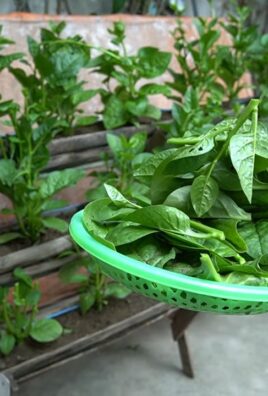
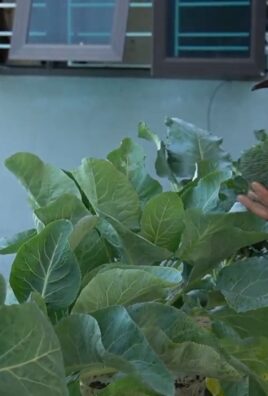
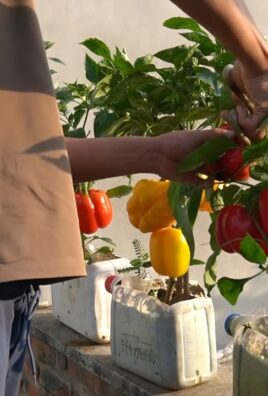
Leave a Comment